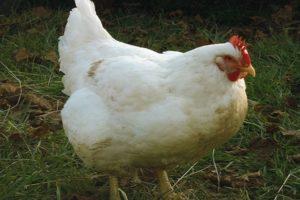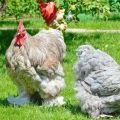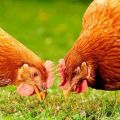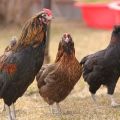Descriptions of the 22 best breeds of dwarf chickens and home care rules
Dwarf decorative chickens are similar in plumage and body structure to their full-sized relatives. Birds are bred for decorative purposes or for the sake of eggs and gourmet meat. Small chickens are kept in the same way as large ones: they equip a chicken coop, a place for walking, and are fed 3-4 times a day. True, they eat a little less feed. Adult birds weigh no more than 1 kilogram.
Content
- 1 Popular breeds of dwarf chickens
- 1.1 Araucan
- 1.2 Ayam cemani
- 1.3 Bentamka
- 1.4 Bantam Java
- 1.5 Brama
- 1.6 Dwarf new english
- 1.7 Chinese silk
- 1.8 Cochinhin
- 1.9 Russian crested
- 1.10 Pavlovskaya
- 1.11 Sibright
- 1.12 Padua
- 1.13 Dutch white-crested
- 1.14 Wyandot
- 1.15 Black (Wuheyiluy)
- 1.16 La flush
- 1.17 Orlovskaya calico (dwarf)
- 1.18 Milfler
- 1.19 Shabo
- 1.20 Ukrainian forelock chickens
- 1.21 Faverol
- 1.22 Phoenix
- 2 Features of maintenance and care at home
- 3 Feeding
- 4 Breeding subtleties
- 5 Content benefits
- 6 Possible problems
Popular breeds of dwarf chickens
Dwarf chickens are a miniature copy of full-size breeds. They appeared relatively recently - 50-200 years ago. Chickens and roosters weigh about 0.5-1.2 kilograms. Dwarf layers produce twice as few eggs per year as large birds.
Araucan
Decorative egg breed of chickens originally from South America. The weight of the roosters is 2 kilograms, the laying hens are 1.45 kilograms. Chickens produce 180 eggs with a greenish-blue shell per year. The plumage of birds is black-red, wheat-golden. On the paws, 4 toes. The breed of German selection has no tail. American and English have a tail.
Ayam cemani
A rare decorative Indonesian breed. These chickens have black not only plumage, but also skin, meat, internal organs, bones. The mass of the roosters is 2.45 kilograms, the laying hens are 1.45 kilograms. The hens lay pink and creamy eggs.
Bentamka
Asian decorative dwarf breed. Roosters weigh 0.65-0.90 kilograms, layers weigh only 0.46-0.65 kilograms. Birds produce 90-145 eggs per year. Roosters have a gingham, hazel-colored plumage, a black tail. The chicken has grayish-beige or brownish-black plumage.
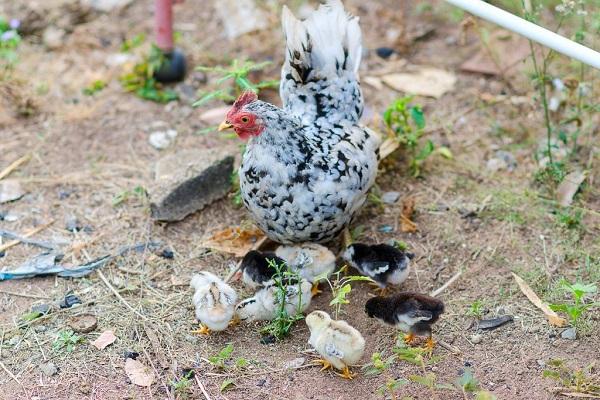
Bantam Java
Dwarf decorative breed from the island of Java. Laying hens weigh half a kilogram, cockerels - about 1 kilogram. Roosters have a black tail and feathers on the chest, the plumage on the body is wheat-golden. The hen has golden brown feathers at the top, dark on the body, layers give 110 eggs per year.
Brama
These chickens have very lush plumage, a lot of fluff in the area of the tail, which lifts the feathers. Coloring - partridge, yellowish-gray, nut-brown. Birds have shaggy legs and a slightly plump body constitution. The mass of cockerels and layers is just over 1 kilogram.
Dwarf new english
These fighting chickens have an unusual appearance: long strong legs, a small body, a medium-long tail, short feathers that fit the body. The color is golden gray. Weight - just over 1 kilogram.

Chinese silk
These chickens have lush plumage, feathers scatter, all together look like wool. The color of birds is white, black, yellowish, blue. On the head - a magnificent "hairstyle". Chickens have short hairy legs. The mass of birds is 1-1.5 kilograms. The skin, bones and meat of these birds are black in color.
Cochinhin
Decorative tame chickens with soft, like down, plumage. Color: black, partridge, white, fawn. Layers look larger than a rooster. Their tail resembles a ball. The figure is stocky, the body is wide. The shins are covered with thick plumage, the legs are not visible.
Russian crested
This breed is often white or pale in color, a fluffy crest on the head, short legs and no plumage. The weight of an adult dwarf cock is only 860 grams.
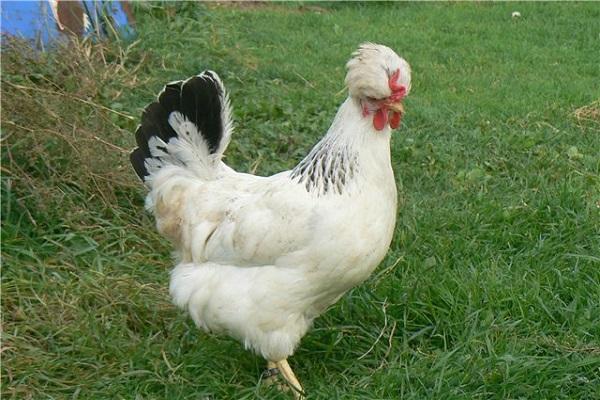
Pavlovskaya
These birds are similar to pheasants. Chickens have golden-black or white-black plumage, on the head there are raised, protruding feathers, on the legs there are hawk-like knees.
Sibright
A dwarf breed developed in England. Bentamki chickens are taken as a basis. Seabright has brown or white plumage with a black border on each feather. The figure is compact, compressed, short. The weight of the birds is 450-500 grams.
Padua
These chickens have a lush crest on their heads and a thick feathered beard. The plumage is dense and dense, the color is chintz, yellow-brown, silvery.
The birds do not have a scallop and earrings.
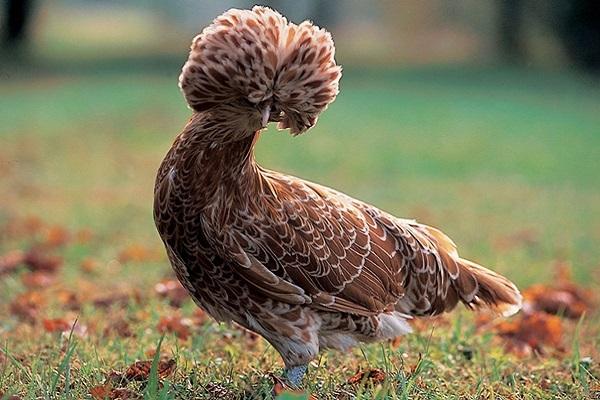
Dutch white-crested
This breed has black, fawn or lavender feathers and a lush white crest on its head. The weight of a dwarf bird is 740-840 grams. The skeleton is light, the body is compact, the wings are small, tightly pressed to the body. The red scallop is hidden in a lush tuft.
Wyandot
The dwarf breed was bred in England. The mass of birds is not more than 1 kilogram. The plumage is lush, white, silvery or brown; each feather has a black or light border. The tail is fluffy, there are no feathers on the paws.
Black (Wuheyiluy)
These birds have a compact body, black plumage with a greenish tint. The scallop and lobes are dark purple. Layers lay green eggs.

La flush
The mass of dwarf birds is about 1 kilogram. The plumage is black with a blue tint. The scallop is red. There are white earrings near the ears. Paws - long, blue.
Orlovskaya calico (dwarf)
This breed has a variegated, white-brown-black plumage. The head is like a bird of prey. Feathers are raised on the back of the neck. Birds have an upright body. Paws are yellow, without feathers.
Milfler
The mass of birds is 550-790 grams. Feather color: porcelain, partridge, black and white. There are "pants" on the legs. Birds have a well-developed hatching instinct.

Shabo
The birds have short legs and a massive, squat body. Plumage - smooth or curly. Coloring: porcelain, silver, golden black. Long wings touch the ground.
Ukrainian forelock chickens
The birds have a lush crest (forelock) on their heads. Coloring: fawn, light Colombian, black. The body is compact, the feathers are close to the body, there is a lot of fluff near the tail.
Faverol
The birds have a compact body, lush feathers of salmon or white-brown color. Short tail, thick collar, furry paws.
Phoenix
This breed has a long tail, up to 1.5 meters. Weight - no more than 810 grams. Color: white-black, golden-brown. The body is slender, the wings fit snugly to the body.
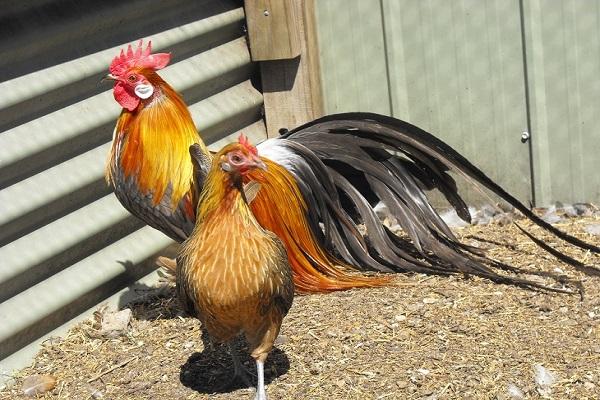
Features of maintenance and care at home
Decorative dwarf birds have beautiful plumage. Such chickens must be kept clean. In the chicken coop, there should always be dry bedding on the floor. Chopped straw, hay, sand or sawdust are used as bedding material. For non-flying breeds, low perches are equipped.
The coop should have boxes or baskets lined with straw in which layers can be carried.
On the street, you need to equip a place for walking, put feeders and drinkers there.It is advisable to keep dwarf chickens separately from full-sized roosters and layers. In winter, the chicken coop needs to be heated. In a cold room, chickens will not lay, they can get sick. The optimum temperature for the content is 15-25 degrees Celsius.
For small chicks in the first month after hatching, they create a comfortable environment. They are kept at a temperature of 27-33 degrees Celsius, in subsequent months the temperature of the content is gradually reduced to 22 degrees above zero.
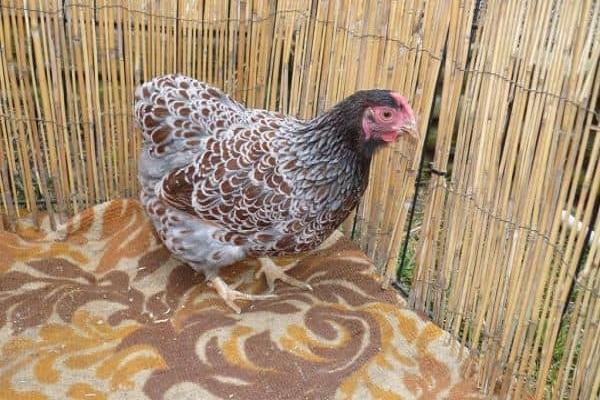
Feeding
Chickens are fed dry, wet and combination feed. It is better to give the birds crushed feed. It contains various types of grain and vitamin and mineral supplements. Chickens prepare wet mixtures from water, crushed grains and vegetables (potatoes, beets, carrots). They give succulent herbs (clover, nettle, dandelion).
Adult birds are fed 3-4 times a day. Dry food is given in the morning and evening, wet mash - in the afternoon (1 time). All grain feeds are ground to 3 millimeters before feeding (up to 1 millimeter for chickens). One bird needs no more than 80 grams of feed per day. Chickens need to be given cottage cheese, sour milk. The trough should contain salt, chalk, bone meal. The birds are given clean drinking water.
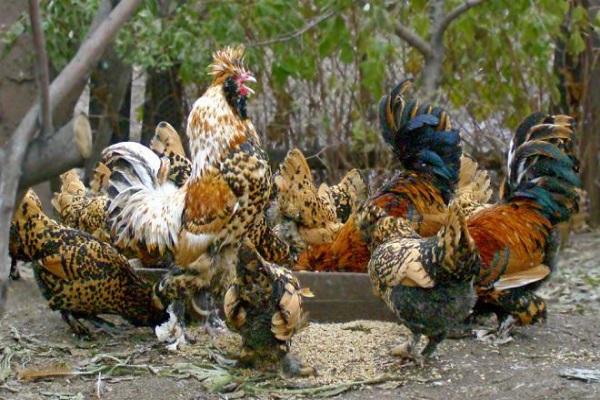
Breeding subtleties
You need to start breeding dwarf breeds with the purchase of chickens or hatching eggs. Purchased eggs are placed in an incubator in which the required temperature is maintained for several weeks. When the chickens grow up and begin to lay, you can use their eggs for breeding. There must be a rooster in the herd. In dwarf breeds, the incubation instinct is expressed in different ways. You can use a hen or an incubator for breeding.
Chicks hatched in the incubator are kept in cardboard boxes for the first week.
The air is heated with a lamp around the clock. The optimum temperature for keeping is about 30 degrees Celsius. 3-4 hours after hatching, the chickens are allowed to nibble on millet, boiled yolk.
Chickens are fed 6-7 times a day. The box should contain a drinking bowl with clean water. Gradually, other grain feeds are introduced into the diet of birds, as well as cottage cheese, vegetables, herbs, and wet mash. If the eggs were incubated by a laying hen, then the chickens can be with their mother from the first birthday. They are released outside if the air temperature is above 23-25 degrees Celsius.
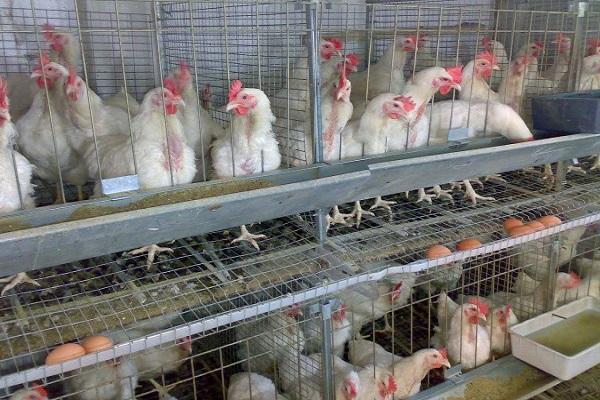
Content benefits
Dwarf chickens are easier to keep, because they eat less, occupy a small area. One square meter of the area can simultaneously accommodate 10 birds. Dwarf chickens are unpretentious, but they need to be kept in a clean and warm chicken coop. In winter, you need to equip the house with a lamp and a heater.
Daylight hours should be 10-14 hours. The room where the birds are kept should have a temperature of 18-25 degrees Celsius. Decorative chickens need to be provided with adequate nutrition, rich in vitamins and minerals.
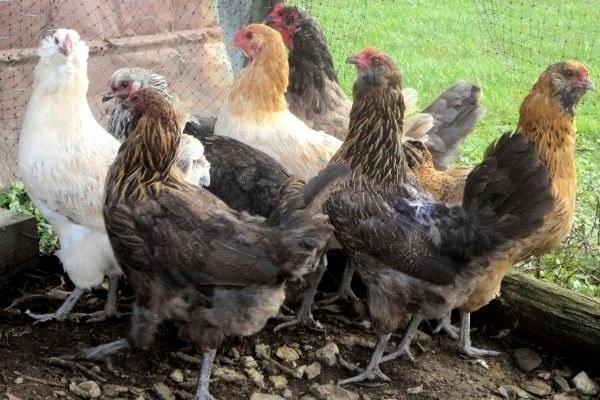
Possible problems
Poultry breeders who decide to breed dwarf birds can face some minor problems. Small chickens need to equip a separate chicken coop and a walking area.
Low perches are made for non-flying breeds. In winter, the poultry house is equipped with artificial lighting and heating. You can add bacteria to the organic litter, which will not let the droppings rot, but will process it into compost and generate heat.
The coop should always be clean and dry.
With improper care and feeding, birds can get sick: they sit still, do not eat, do not run, tremble, limp, vilify. For the prevention of diseases, chickens are given vitamins A, C, group B, and immune serum from infections is injected. Birds are given drugs for worms, feathers are treated with flea medicine. Chickens need to be constantly monitored and at the first sign of malaise contact a veterinarian.
